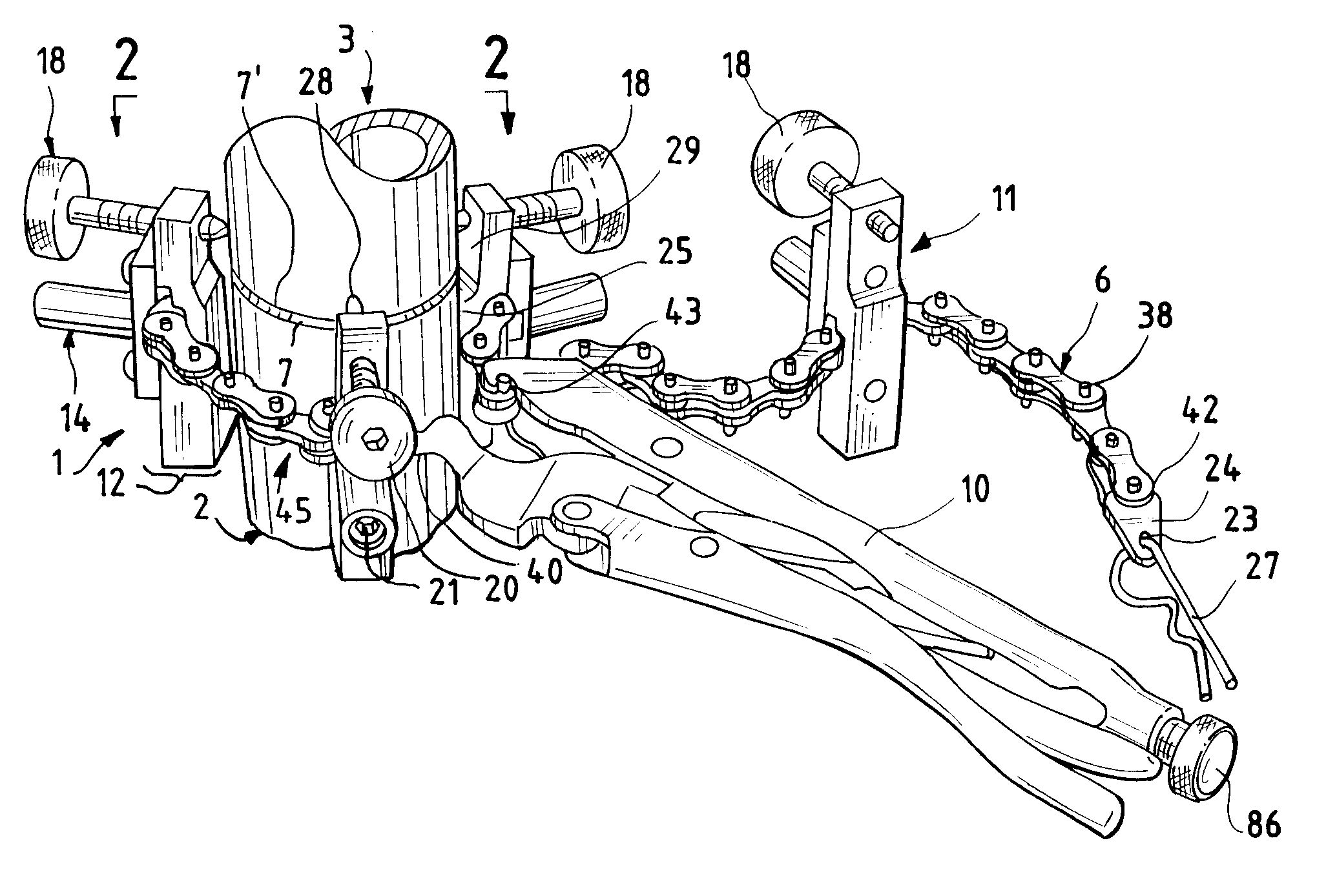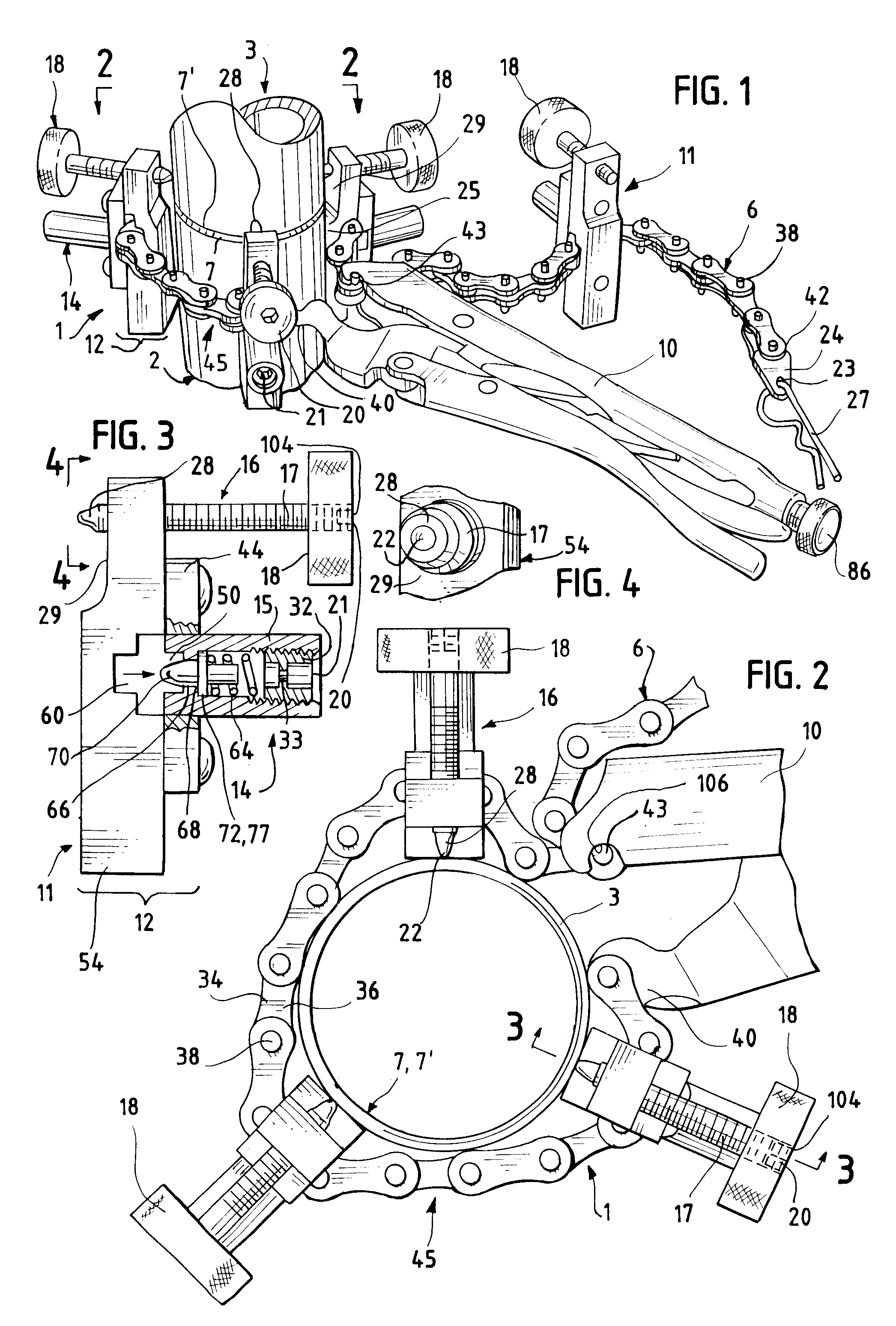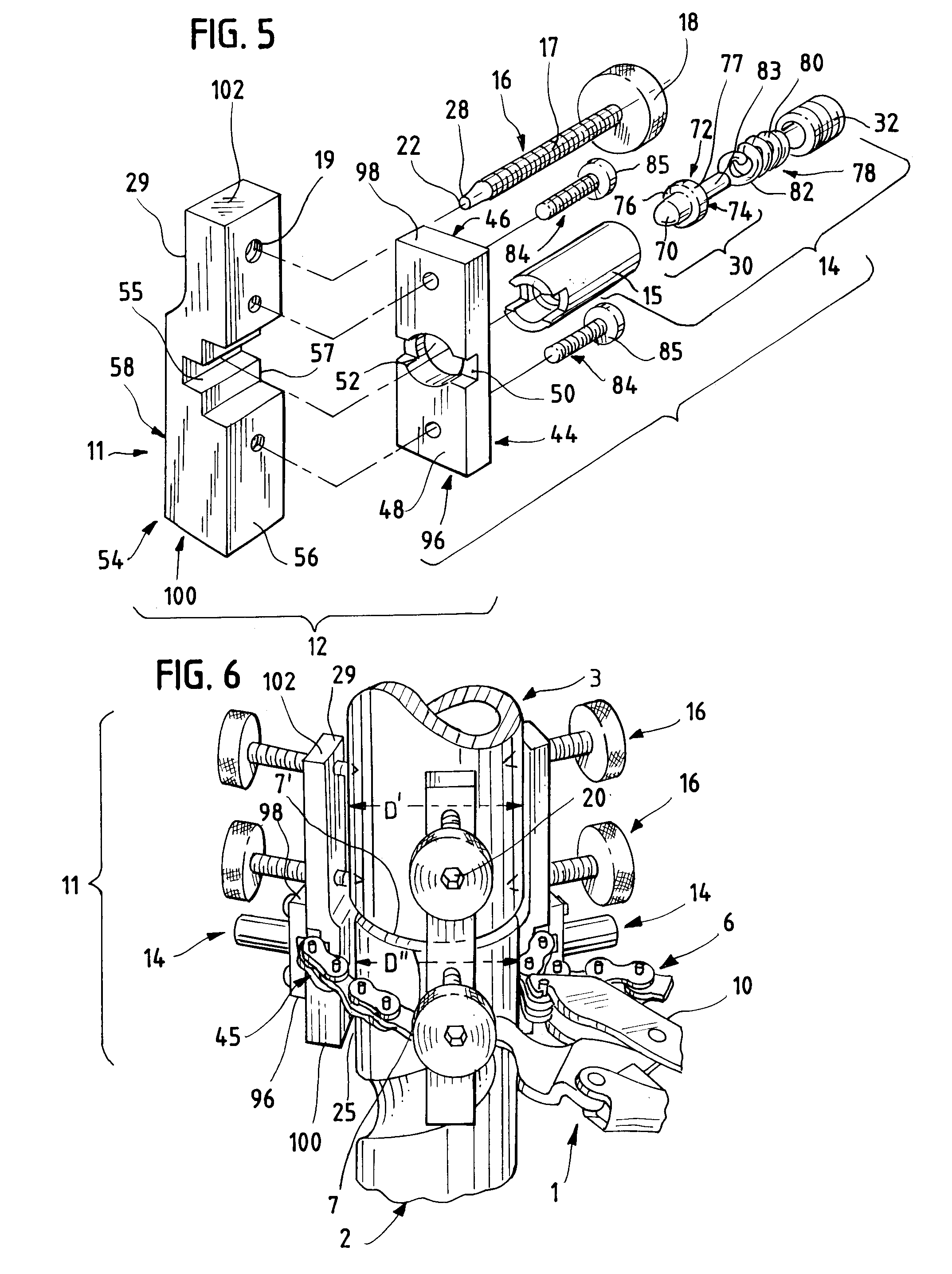Alignment clamp
a technology of aligning clamps and clamping rods, applied in the direction of soldering apparatus, manufacturing tools, auxillary welding devices, etc., can solve the problems of preventing damage to the connecting workpiece, unable to meet the needs of use, so as to facilitate tightening and loosening, efficient alignment and joining
- Summary
- Abstract
- Description
- Claims
- Application Information
AI Technical Summary
Benefits of technology
Problems solved by technology
Method used
Image
Examples
Embodiment Construction
FIGS. 1 AND 2 depict a preferred embodiment of an alignment clamp assembly 1 in use, aligning a first confronting terminus 7 of a first workpiece 2, with a second confronting terminus 7' of a connecting workpiece 3. In FIG. 2, the first workpiece 2 is hidden behind the connecting workpiece 3.
In FIGS. 1 AND 2, the first workpiece 2, and the connecting workpiece 3, are vertical circular pipe sections. The workpieces 2, 3, 3' need not be horizontal or vertical, but may be in any position. FIG. 8 depicts the alignment clamp assembly of FIG. 1, in use on a pair of square bar workpieces 2, 3. Prior art has not shown an alignment clamp used on non-circular workpieces.
As shown in an equivalent embodiment depicted in FIG. 7, it is possible to use other, equivalent embodiments of the invention, to align more than two workpieces. Therefore, the term "connecting workpiece" should be defined to include the workpiece 3, or workpieces 3, 3', that will be aligned with the first workpiece 2, by a pa...
PUM
| Property | Measurement | Unit |
|---|---|---|
| diameter | aaaaa | aaaaa |
| outer diameter | aaaaa | aaaaa |
| flexible | aaaaa | aaaaa |
Abstract
Description
Claims
Application Information
 Login to View More
Login to View More - R&D
- Intellectual Property
- Life Sciences
- Materials
- Tech Scout
- Unparalleled Data Quality
- Higher Quality Content
- 60% Fewer Hallucinations
Browse by: Latest US Patents, China's latest patents, Technical Efficacy Thesaurus, Application Domain, Technology Topic, Popular Technical Reports.
© 2025 PatSnap. All rights reserved.Legal|Privacy policy|Modern Slavery Act Transparency Statement|Sitemap|About US| Contact US: help@patsnap.com



